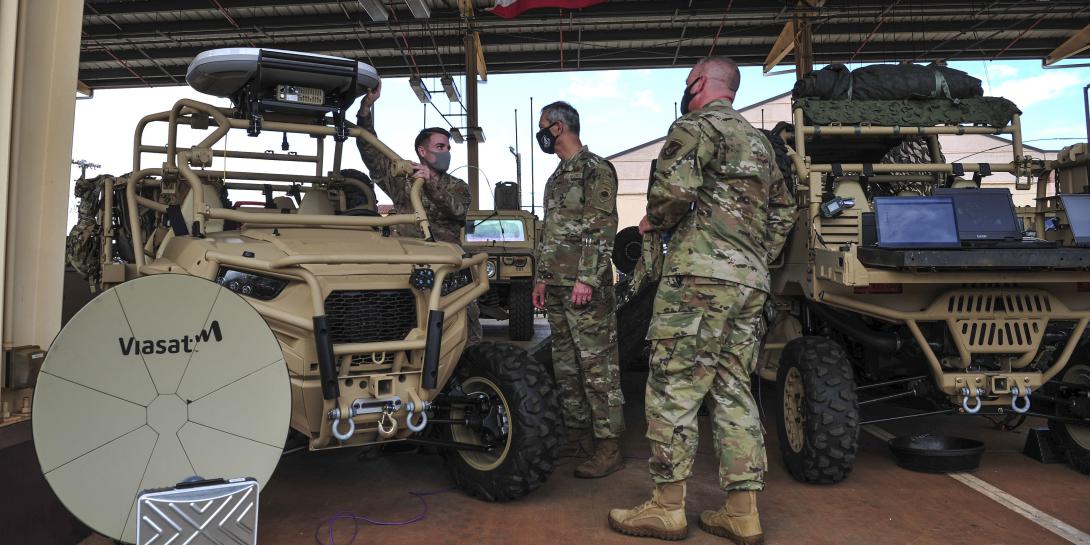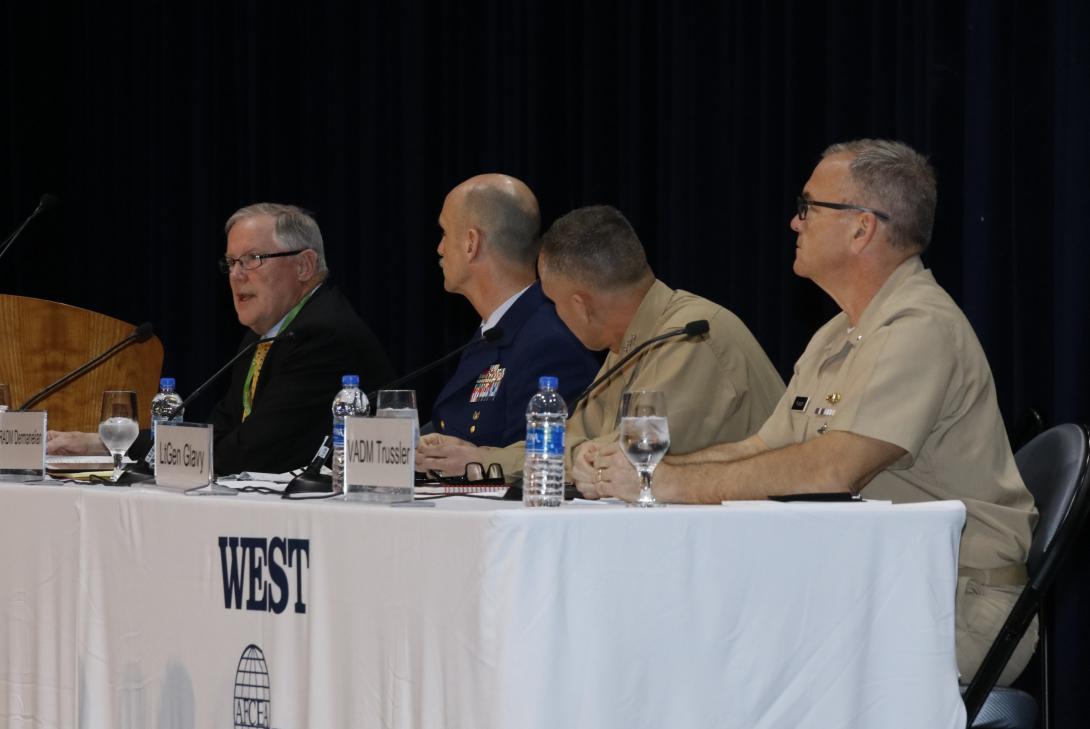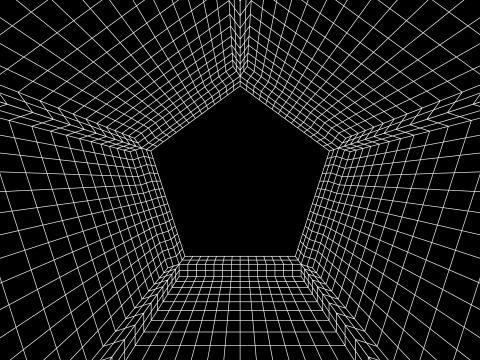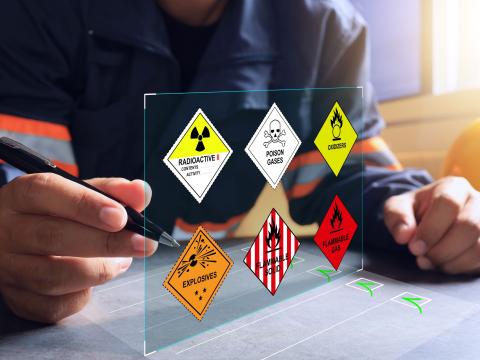The Vision and Need for JADC2 Remains
The U.S. military services are embarking on a widespread effort to connect all sensors to all shooters in every domain. This concept of Joint All-Domain Command and Control is challenging but remains vital given our adversarial threats, leaders said today speaking at AFCEA International and the U.S. Naval Institute’s WEST 2022 conference and exposition held in San Diego February 16-18.
Lt. Gen. Robert Shea, USMC (Ret.), permanent director, AFCEA International Board of Directors, remarked how China continues to disrupt international order and rules, aims to be the leader of standards organizations to its favor and moves strategically to accomplish its goals.
LtGen Robert M. Shea, @USMC (Ret.), Permanent Director @AFCEA International Board of Directors: China is looking to dominate the Indo-Pacific and beyond, disrupt international world order and move strategically #WEST2022 pic.twitter.com/S1wnf3MeqE
— Kimberly Underwood (@Kunderwood_SGNL) February 17, 2022
Vice Adm. Jeffrey Trussler, USN, deputy chief of Naval Operations for Information Warfare and director of Naval Intelligence, reminded the audience that the threat from the People’s Republic of China and its pursuit to be the dominant global power were exactly why the U.S. military needs to accomplish JADC2.
“We have to always make sure we remember what the purpose of Joint All-Domain Command and Control is,” Adm. Trussler stressed. “Adm. [Samuel] Paparo [commander of the U.S. Pacific Fleet] said it perfectly: ‘Overwhelming, accurate and lethal combat fires.’ In the end, that is what it's all about. It is going to be in a denied environment, where the adversary is trying to jam you, trying to confuse you, trying to deceive you, trying to take away and disrupt your communications. And, Adm. Paparo said, ‘I need an immediate, targetable picture of the AOR [area of responsibility], and his boss, Adm. [John] Aquilino [commander, U.S. Indo-Pacific Command], has said, ‘I want point-click.’ And that's a tall order. But that is a defining North Star of what JADC2 is about and what we're working to deliver.”
VADM Jeffrey E. Trussler @USNavy Deputy Chief of Naval Operations for Information Warfare and Director of Naval Intelligence: The Chinese PRC is why we are pursuing JADC2. It’s for us to have overwhelmingly accurate & combat lethal fires in a denied environment. #WEST2022 @AFCEA pic.twitter.com/JjH38YCHvt
— Kimberly Underwood (@Kunderwood_SGNL) February 17, 2022
The pursuit of JADC2 is aligned with the U.S. Marine Corps commandant’s force design efforts and its joint operational focus. “The idea of the stand-in force parallels directly with the Joint Warfighting Concept,” explained Lt. Gen. Matthew Glavy, USMC, deputy commandant for Information, Headquarters, U.S. Marine Corps. “[It’s] having 20,000 Marines west of the international date line and having proximity to that first island chain in the weapons engagement zone that gives unique opportunity, both in terms of placement and access. That opportunity can be seen in our ability to act as this forward observer, this forward air controller, the ability to enable the Joint Force, and the ability to provide those things like long-range lethal fires and really all types of nonkinetic effects.”
LtGen Matthew G. Glavy @USMC, Deputy Commandant for Information: JADC2 parallels our growth as a Fleet Marine Force as we stand-in forward in the weapons engagement zone, close to the adversary, to enable the Joint Force #WEST2022 @AFCEA pic.twitter.com/qk797DQVCn
— Kimberly Underwood (@Kunderwood_SGNL) February 17, 2022
Practically every month, the general said, in preparation for joint warfighting, the Marine Corps goes out to Twenty-Nine Palms, California, to conduct combined arms exercises, because they need to “certainly raise our game to what we got to do going forward.” The service’s introduction of its new Marine Littoral Regiments, or MRLs, and Marines that are specializing in near-peer warfare, will also be key to conducting JADC2 operations.
“Our ability to sense the environment is critical to any type of targeting cycle,” Gen. Glavy said. “Anybody knows who's been in the room for the legal, lawful and ethical requirements of executing the targeting cycle in all domains. The ability to do the C2 of all that is really an integration that fits squarely in our ethos, that of combined arms. What JADC2 is opening up our eyes to is the ability to coordinate fires in every domain. The ability to take that sensor data at the highest classification levels and push it to the lowest possible point to create an integrated fires solution from kinetic to nonkinetic to air to sea to maritime to subsurface.”
The U.S. Coast Guard’s unique sea service, homeland security, law enforcement and Defense Department missions do not mean that it is not preparing for joint operations, especially in the Indo-Pacific and Arctic regions. To the contrary, said Rear Adm. David Dermanelian, USCG, assistant commandant for Command, Control, Communications, Computers and Information Technology. The service is tackling a widespread technology revolution with a joint focus.
RADM David M. Dermanelian, @USCG Assistant Commandant, C5 & Information Technology: Our ability to conduct Joint warfare across all domains has no finish line. It’s an infinite game that requires a unity of effort.
— Kimberly Underwood (@Kunderwood_SGNL) February 17, 2022
#WEST2022 @AFCEA pic.twitter.com/Tjh4ajrF2K
“The Coast Guard is already in the game,” he stated. “Our first line of effort is to improve our Cutter connectivity, that means in the Arctic and the Antarctic, and in Indo-Pacific and Oceania. We are on that journey and one of the biggest things that Adm. Schultz has taught me is that ‘success begets success.” So, showing that incremental delivery of capability or that minimal viable product, which we have done over and over, that generates more and more confidence on which direction the dollars should go. It is an iterative process and we're going to deliver capability, I would argue, every month.”
“At the end of the day, JADC2 is not an answer,” Gen. Glavy added. “It's really a concept. It’s going to be principle-based to determine how best we see and solve that very complicated problem.”
Lastly, Adm. Dermanelian encouraged military leaders to continue to commit to JADC2 despite the challenges. “I think the biggest surprise is how long it takes and the level of complexity that we're talking about with Joint All-Domain Command and Control,” he said. “There's nothing simple about it. And if we're trying to get after some of these complex problems, it's the time it takes to get unity of effort; it's the complexity associated with things like [systems] of systems.”






Comments